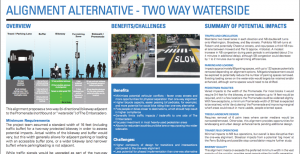3 Videos
Link #1
The first attempt was a little rough just because it was right after writing out my S4 and deciding placement of certain slides and facts. I also was still unsure of what I wanted to include and exclude so my stuttering was very present. However, for this presentation because I know what and how I want to leave an impact with my classmates, I foresee that being my biggest challenge – trying to do to much. Definitely trying to be less broad and more concise.
Link #2
After narrowing down my area of focus and finalizing my slide presentation, I felt more comfortable doing video practice number two. Because of this i decided to attempt to stand up and trying moving around. As seen in the video, I still am unable to decided what to do with my hands when speaking. However, with me directing the presentation and to the audience, i don’t foresee my hand movement necessarily being a bad thing. Overall clarity seemed to improve.
Link #3
For my finally video I decided to do it in front of my friend – this due to me wanting practice making uncomfortable eye contact with classmates during my last presentations, which then make me lose my train of thought. Throughout the eye I consider this to be my biggest hinderance in my delivery. While I did stutter at times, for some reason I still find myself reliant on my notes, even though I’ve done similar presentations on this topic to others and am passionate about this topic.
Speaking Center
I booked my appointment with Claudia Sanchez. I made appointments with her in the past for this class, so I knew what I should work on going into it. Claudia makes me feel comfortable and offers feedback that I subconsciously know should be changed, but don’t unless I have someone (like her) telling me to do something differently. We weren’t able to meet directly for a full session, but once realizing that with break and the short time we had before presentation day, I spoke to her before our schedule meeting. We were able to discuss how to attract and engage my audience. Referring to them and using evidence and scenarios that allow my classmates to imagine themselves in the situation. After this semester, I definitely foresee myself making appointments with her.
Write- out
Slide 1
I am sure everyone here has one of these *pulls out phone*
Slide 2
The average person between the age 15-25 uses their phone for 3 hours per day, mainly to check their social media feeds. Now guess how many social media accounts the average person has…yup you’re right 3! While yes there seems minimal to many of us, if you’re spending 5+ hours checking and using them, is there a better way to use your time on those sites.
Living in an age where digital communication has been integrated into everyday life, whether that’s through text, call, retweeting, posting, or reacting to something. it has become our way of telling others how we feel.
We’ve become accustomed to a form of communication that while it has its downsides, can truly benefit movements around the world.
Slide 3
Over the last decade we have seen social media platforms ask less and less of their members or subscribers in terms of effort and representing their own ideas. The end result is then the degradation of activism into a series of petition drives that capitalise on current events. Bay Area clicktivist organisations are finding it increasingly difficult to motivate their members to any action whatsoever. The unfortunate trend of clicktivism as struct those on social media between the ages 12-30. Those who never go beyond just retweeting or reacting to a stance versus actively engaging through technology for change. Between 80% to 90%, of so-called members rarely even open campaign emails anymore, in large part due to many seeing political engagement becomes a matter of clicking a few links. There is an unfortunate trend of clicktivism amongst those 15-30.
Activism v Advocate (3)
Activism and advocacy are terms that are proven crucial when discussing public communication and intentions towards social change and movements. Because they are so often used interchangeably, because they do overlap, they also have distinctly differences – which reflect in your actions towards or as apart of movements.
An activist is a person who makes an intentional action to bring about social or political change. This action is in support of, or opposition to, one side of an often controversial argument.
An advocate is one who speaks on behalf of another person or group. (lobby/legislation)
Egyptian Revolution – Slides 4 & 5
For any of you who were attuned to current events back in 2012, would remember the egyptians uprising by civilians. Twitter was used to bring face to the movement and create global awareness and divulge surrounding those issues. For months to the streets of Cairo in January and February 2011. What has shocked most observers of the current Egyptian scene is the sheer speed with which the regime fell — 18 days.
Facebook helped to organize the activists inside the country, he said, while Twitter functioned to help get the message out to the broader world
However, this movement and revolution went beyond just awareness, but sparked and forced conversations seeking to vote immediate change. You so often see friends and family members retweet or react to a post about a hot social issue, however become complacent when they meet an opportunity to react in person. While marching in rallies or speaking to various boards is not for everyone. I’m telling you now is the time where hiding behind a screen and instigating is okay. Now in no way am go out and troll or cyber bully those with differing opinions than you, but instead seek out social media avenue in which allow for uncomfortable or controversial conversations to be had through a median that is comfortable for both parties.
Twitter Power Hours – Slide 6-7
Back in late october there was a “Twitter Power hour” around an elected school board bill in Illinois. The concept around it is that some sort of organization or group of people come up with the consensus that for an hour on Twitter they talk through their issue in hopes to suade those who are skeptics. It also is a demonstration of support. As seen here …trend…. The great thing about them is that its an open forum that creates dialogue and a respectable form of communication between those with differing views
Slide 8
These are two great people to follow if you are interested in seeking out social media oriented talks. Melinda Anderson is a writer for The Atlantic. Xian is a teacher back in Chicago whose work with students revolves around social justice and education equity for students of color. And even is racial or educational forums don’t interest you both are still great to peak around their follows cause you are sure to find others like them but with different interest.
Slide 9
So the next you go out and retweet or react, I ask that you click with intention. Click with passion. And click with hope.
 Post Presentation Reflection (500 words)
Post Presentation Reflection (500 words)